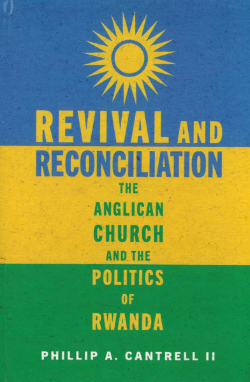For about 100 days in 1994, the strife that had already plagued Rwanda for years exploded again in a genocidal paroxysm. From April to June, ethnic Hutu struck back at the formerly dominant Tutsi, killing at least half a million people in that period. Some careful estimates go as high as 800,000. The Tutsi government that eventually recovered power puts the toll over a million.
Regardless of the ultimately unverifiable numbers, it was devastation on a scale that outpaced all such prior horrors. The world’s media struggled to keep up with the story as it unfolded, and efforts to explain it since have run up against global distractions, linguistic barriers, the necessary learning curve of Rwandan history, and the current government’s efforts to impose a narrative that stresses a re-established harmony.
Phil Cantrell, associate professor of history at Longwood University, has just finished a study of this dark, complicated passage, which finds a new perspective to consider: the perhaps surprising role of the Anglican Church. In Revival and Reconciliation: the Anglican Church and the Politics of Rwanda, just published by University of Wisconsin Press, Cantrell first unpacks the pre-colonial history of the region, but then he quickly turns to the penetration of the church’s Rwanda Mission into a region controlled first by Germany, then by Belgium after World War I.
Even in the colonial years, Cantrell found the patterns of political compromise, exploitation, and historical spin that eventually led to the Rwandan Civil War and the follow-on genocide. As Anglican missionaries set up churches and parishes in Rwanda, they were seen as being linked to the region’s power-brokers, especially the Rwandan monarchs who were Tutsi. As independence drew near and ethnic violence increased, the Anglican Church’s Rwanda mission tried to hold on to its formal neutrality towards all parties.
But the Anglicans had several dynamics working against them, in Cantrell’s analysis. One was the sense that their neutrality implied a working understanding with the Tutsi power structure. The other was their own spiritual focus. The revival energies of the early twentieth century, which often had a focus on Jesus’ predicted Second Coming, led to an emphasis on preparing parishioners for spiritual events to come rather than dealing more with contemporary troubles, including the ethnic and political tensions wracking the nation-to-be.
Still, once independence was achieved and the monarchy ended in 1962, the republic that emerged after 1973 under Juvénal Habyarimana left much of the responsibility for health care and education in the hands of Catholic and Protestant churches. This led to a church-state symbiosis that Cantrell found especially blind to the simmering tensions. Additionally, another pattern repeated as the government pushed a post-ethnic message, stating that everyone was Rwandan rather than Hutu or Tutsi. Despite this party line, the Anglican leadership in Rwanda was becoming ever more Hutu across these decades. Come the genocide, Cantrell notes a number of clergy who supported the Hutu Power movement.
But the clergy suffered as well, both in terms of Tutsi priests and laity killed during the genocide, plus Hutu who suffered afterwards in the restoration of Tutsi authority. Churches were scenes of some of the worst horrors as crowded sanctuaries were betrayed and turned into killing grounds.
Since 1994, the new Rwandan government under Paul Kagame has attempted, in line with previous patterns, to impose a historical memory bent towards reconciliation. For Cantrell, this seemingly laudable effort is worrisome, since similar attempts to paper over real  differences has only let cycles of oppression and resentment come back to explosive boil-overs. In addition, as he focused on the efforts of well-meaning Christians to offer help in the wake of the genocide, he has seen them falling into some of the same ruts as the earlier Anglicans, often extending trust to co-believers without knowing the full history.
differences has only let cycles of oppression and resentment come back to explosive boil-overs. In addition, as he focused on the efforts of well-meaning Christians to offer help in the wake of the genocide, he has seen them falling into some of the same ruts as the earlier Anglicans, often extending trust to co-believers without knowing the full history.
In the course of researching and writing his book, Cantrell demonstrated to a Longwood classroom how this state-imposed narrative can have real-time consequences, especially when the state uses contemporary media tools to promote one message and suppress others. He tweeted that Rwanda needed to account for its cross-border actions in Congo. Less than a day later he was able to show his class how he had been labeled a “genocide denier” by accounts based in the Rwandan capital. The irony of this, as his students knew, was that he had recently published a chapter that studied—not denied!—the Rwandan genocide among others.
For Cantrell and his students, his research has shown just how elastic the past can be, seeming to stretch away only to snap back into the present-day with unexpected speed, and lessons sadly in need of being learned… again.


